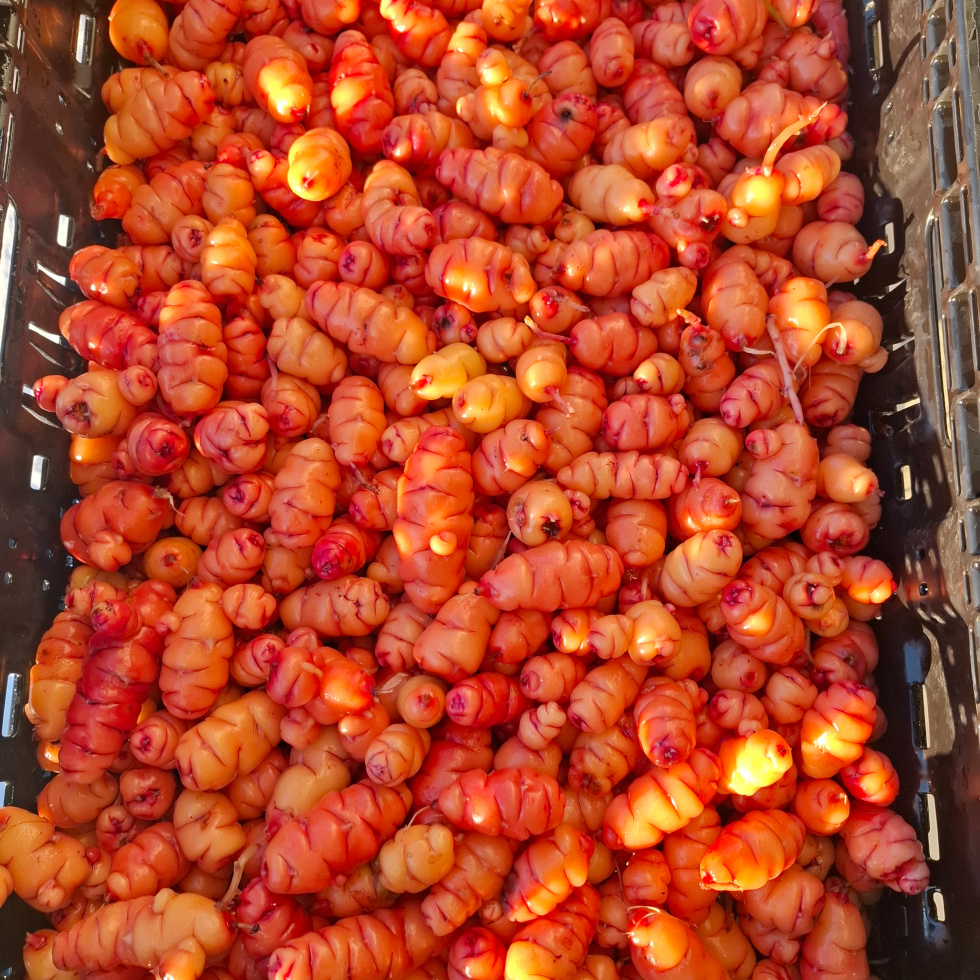What’s More Tasmanian Than an Edgy Potato?
by Ollie Benson

Oca (Oxalis tuberosa), also known as the New Zealand yam, is a root vegetable native to the Andean region of South America. It’s still widely cultivated in countries like Peru, Bolivia, and Ecuador and in recent years, oca has gained popularity in other parts of the world, including Australia, New Zealand and the United States, due to its nutritional value and versatility in the kitchen.
Oca is a hardy plant that can grow in poor soils and cold climates, with one of the unique aspects of oca cultivation being its response to photoperiod, the period of time in a day that a plant is exposed to light. The tubers begin to form when the days shorten and are ready for harvest around June and July, making it a great crop to grow in Tasmania.
One farm that has embraced the cultivation of oca, as well as the Tassie climate, is Rise and Shine Farm. Run by Coral and Nick Warren, Rise and Shine is a diverse, multi-enterprise farm based in Copping. The Warrens practice organic and regenerative principles, using diversity to support and grow interrelated enterprises and improve the health of the land. As well as a flourishing market garden they also run an alpaca stud, keep bees for honey and run chickens on pasture for eggs.
Having spent a dozen or so years moving around the mainland with Government postings, Coral and Nick returned to Tasmania in 2018, commencing farming a year later. Prominent in their local community, they can be found each month at the Bream Creek Farmers Market, with a range of produce from their market garden as well as eggs and alpaca yarn. And oca has proven to be a fantastic product for them during the winter months.
As well as good fun to grow, Coral believes their versatility in the kitchen is one of their most appealing qualities. They are easy to cook, with a sweet, mellow flavour, and can be used as an alternative to potatoes. Perfect in soups and stews, great pan fried or baked, Coral loves to roast them in a tray with onions and fennel. They can also be eaten raw, with their crispy texture and tangy, lemony flavour being perfect for winter salads.
Coral is also quick to point out their beauty. The knobbly tubers can vary in colour, including shades of yellow, orange, red, pink, and even purple, and this diverse range of colours indicate the presence of various phytonutrients, which contribute to its health benefits. They are highly nutritious, rich in carbohydrates, dietary fibre, and vitamin C, and provide a good source of potassium, iron, and antioxidants.
So, oca – a hardy, knobbly, versatile, and colourful tuber, that thrives in challenging conditions, and forms as the days shorten.

Honey and Lemon Baked Oca
Ingredients
300g oca
1 tbsp extra virgin olive oil
1 lemon – zest and juice
1tbsp honey
Thyme
Chili flakes
Method
Preheat oven to 180 degrees. Whisk extra virgin olive oil and lemon juice in a bowl. Clean oca and add to the oil and lemon mix, turn to coat. Place oca on a baking tray. Drizzle oca with honey. Scatter from a height with lemon zest and thyme. Season to taste with chilli, salt and pepper. Bake in the oven for 25-30 minutes

